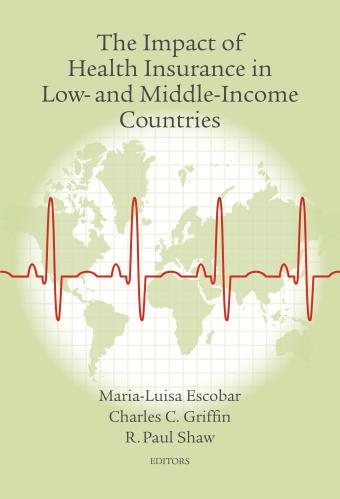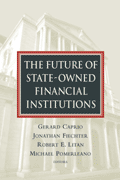Studies in this week’s Roundup find that a shrinking share of jobs are at the low-wage end and a rising share at the high-wage end, that teenagers who begin driving when gas prices are high drive less later in life, and that a weaker dollar can increase state employment.
Want to receive the Hutchins Roundup as an email? Sign up here to get it in your inbox every Thursday.
More middle-wage workers are moving to higher-wage jobs than to lower-wage ones
Jennifer Hunt of Rutgers University and Ryan Nunn of Brookings use data from the Current Population Survey to challenge the case, made by a number of researchers, that employment in the United States has become increasingly concentrated in low- and high– wage jobs relative to those in the middle. They show that the share of workers earning the lowest wages has declined slightly since the 1970s while the share of workers earning relatively high wages has risen steadily. While it is true that the number of workers earning middle-wages has declined since 1973, they show that this has been driven by an increase in mobility from middle-wage jobs to high-wage jobs and a slight decline in mobility from low-wage jobs into middle-wage jobs. The findings suggest that increases in low-wage employment alone are not driving increased wage inequality. In addition, the share of workers earning low wages declined steadily between 1990 and 2002, implying that computerization and automation may have played smaller roles in replacing middle-wage jobs with low-wage ones than is commonly thought.
Early experiences with high gasoline prices affect driving behavior later in life
Arthur A. van Benthem of the University of Pennsylvania and Christopher Severen of the Federal Reserve Bank of Philadelphia find that individuals who began driving during periods of high gas prices are less likely to drive themselves to work when they are older, and drive fewer miles each year than those who did not. They show, for example, that individuals who were between the ages of 15 and 18 during the 1979 oil crisis were about 0.4 percentage point less likely than their older counterparts to commute via car 20 years later, and significantly more likely to use public transit. The effects of early experiences with high gas prices are larger for low-income individuals and those in urban settings. The analysis suggests that early experiences have long-run consequences for consumer behavior in ways that traditional economic analysis may overlook.
Depreciation of the dollar increases employment in US states
Christopher L. House and Linda L. Tesar of the University of Michigan and Christian Proebsting of the Swiss Federal Institute of Technology in Lausanne use data on trade, migration, and employment in U.S. states from 1999-2018 to study the effects of changes in the exchange rate on economic activity. The authors find that, controlling for the amount of states’ trade with foreign countries, a 1 percent depreciation of the U.S. dollar decreases the unemployment rate in a given state by 0.4 percentage point on average and increases economic exports and GDP by between 1 and 2 percent. Using a theoretical model, they show that the effects of exchange rates on economic activity are transmitted across the states through interstate trade and migration. Their model suggests that a 25% Chinese import tariff on U.S. goods would be felt even in states with small direct linkages to China, raising unemployment rates by 0.2 to 0.7 percentage points in the short run.
Chart of the Week: Private R&D spending is now more than double government R&D spending, ex-Defense

Source: The Wall Street Journal.
Quote of the Week:
“Speaking for myself, I would be very concerned about a continued failure of the Federal Open Market Committee to achieve its inflation target. I would be particularly concerned if such a failure led private decision-makers to adjust their expectations in a way that is inconsistent with the FOMC’s stated goals. But my reading on inflation is that, though it has been below target for some time, the best measures suggest it is close to target and not materially trending away from it. What’s more, my preferred data on inflation expectations do not indicate that these expectations are diverging from target either. Combined with 10 straight years of growth and a labor market that added more than 200,000 jobs last month, this suggests that the snapshot of the economy is a ‘keeper,’” says Raphael Bostic, president of the Federal Reserve Bank of Atlanta.
“The policy settings needed to sustain this picture are, of course, what my colleagues and I will be wrestling with at our next FOMC meeting in a few weeks. I do not want to front-run that conversation. As always, I will go into the meeting with an open mind. But I do feel that with respect to both objectives of our dual mandate, we are in a good position.”
The Brookings Institution is committed to quality, independence, and impact.
We are supported by a diverse array of funders. In line with our values and policies, each Brookings publication represents the sole views of its author(s).











Commentary
Hutchins Roundup: Low-wage jobs, formative gas price experiences, and more
July 18, 2019